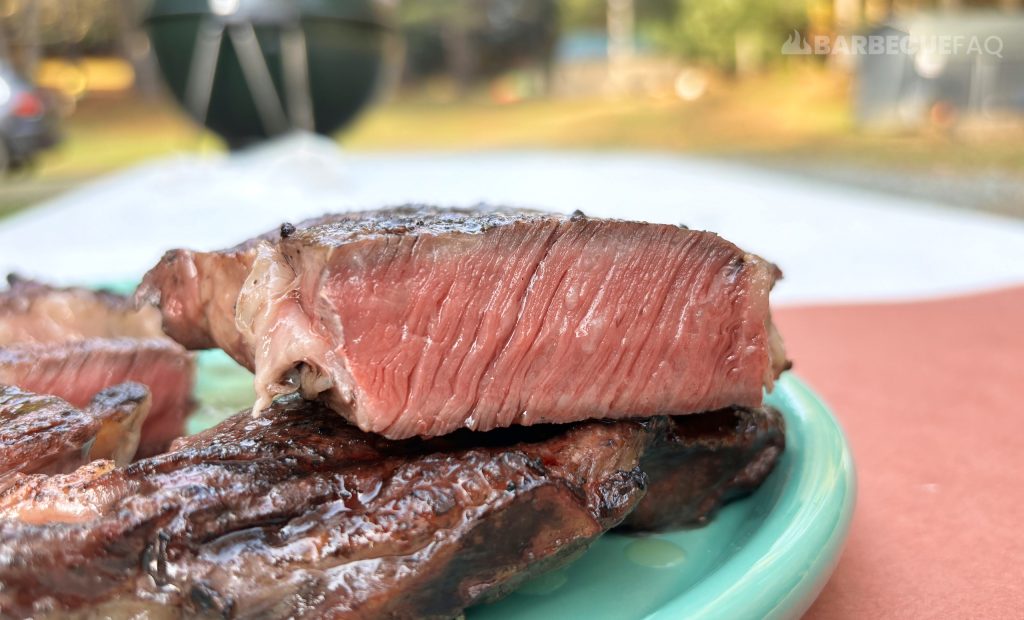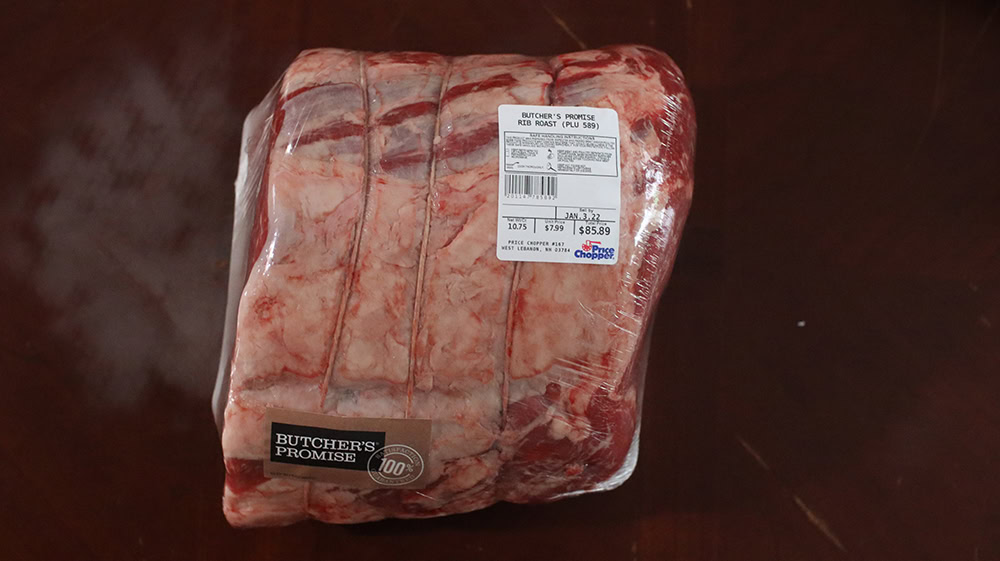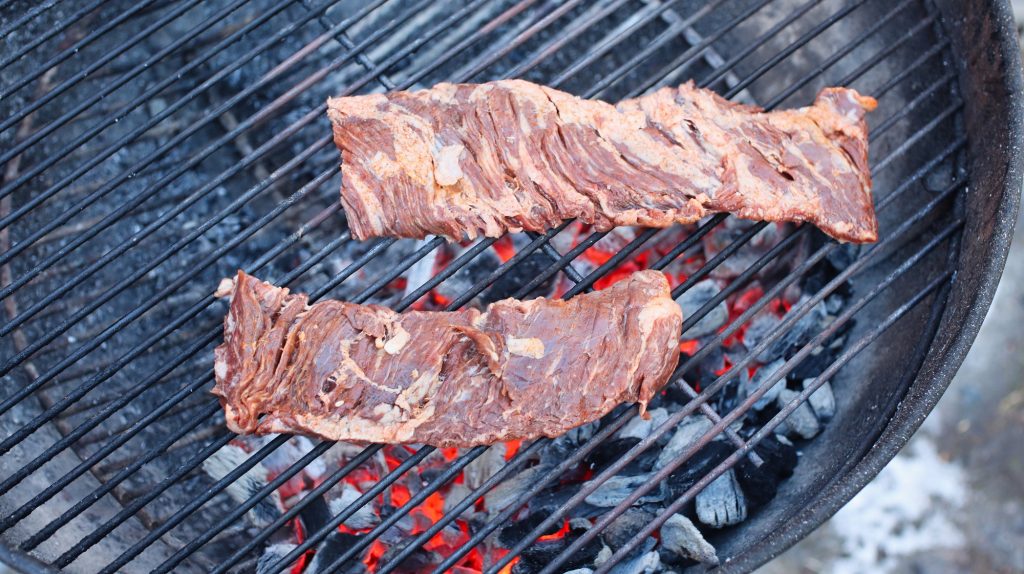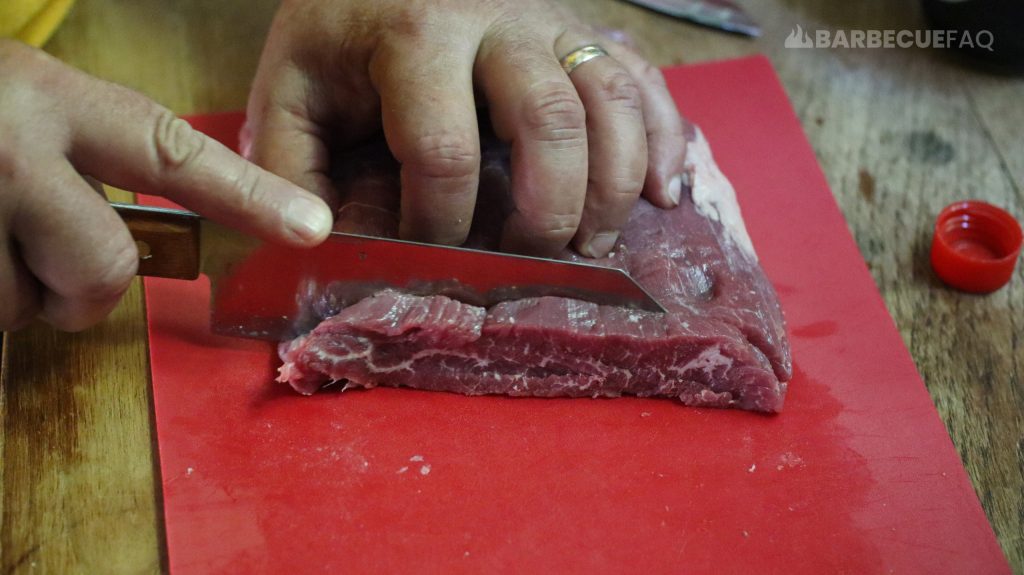Chuck Eye is Cheaper than Ribeye
Hence “Poor Man’s Ribeye” because these steaks are quite literally next to each other.

Only, the Ribeye is more desirable so it’s more expensive per lb.
BUT I’ve still never found Chuck eye steak locally.
Even online, the only place I’ve bought it from is Porter Road.
To compare Porter Road’s pricing (12/17/2024):
- Chuck Eye Steak: Estimated weight (0.69 – 0.81 lbs) for $22 or $27.16 – $31.88/lb.
- Boneless Ribeye Steak: Estimated weight (0.94 – 1.06 Lbs) for $48 or $45.28 – $51.06/lb.
Porter Road is an online butchery that’s selling dry-aged beef so it’s naturally more expensive.
However it demonstrates my point, the chuck eye steak is still cheaper.
If you live somewhere where the butchers distribute both of these cuts, you’ll find the same thing.
Differences in Taste
Both of these are comparable to one another.
The chuck section is known for its forward “beefy” flavors; If you’ve ever eaten a chuck roast, it’s like that but also similar to Ribeye steak.
The main difference is just in texture.
Chuck eye will have a bit more “chew” compared to ribeye.

Meat from the rib section of the cow is furthest from the hooves and legs, meaning it’s more tender.
Since chuck eye steaks are closer to the front legs, they’re less tender.
It’s the same story for the NY strip, which is closer to the rear legs.
I Personally Think Chuck Eye Steak Tastes Better @ Medium-ish and Ribeye is Best @ Medium Rare
If I were to guess, most people probably feel this way.
I’ve also tested it dozens of times and I’d urge you to do the same.
Chuck eye has more collagen and connective tissue, and I’d assume that this comes down to being able to render more since it’s being cooked longer.

Chuck eye also has a decent amount of intramuscular fat which helps keep it juicy.
As we’ve learned above, ribeye is naturally more tender and is more juicy at medium-rare since the free moisture is maximized.
The intramuscular fat also melts making it buttery rich.





3 comments
Terry Torkildson
The most informative article on steak I have ever read. Maybe do a follow up on the chemistry involved in preparing steaks? Thank you!
Salvador Martinez
Diffenantly I used to go to my butcher and order porterhouse steaks . One day he asked me if I ever had Chuck Eye, I replied No. He Gave Me two @ No Charge, they were delicious!! I
Went back and paid him for them and have Ordered Chuck Eye for over Twenty Years now!!
Also Known As The Butcher’s Cut ( As they often keep for Themselves. 😁
Dylan Clay
Thanks for the kind words Terry!